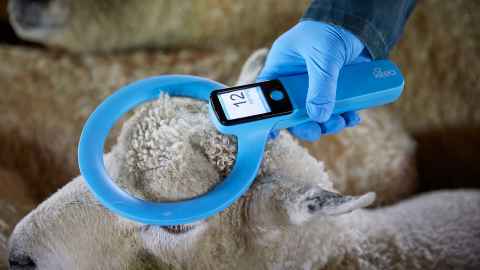Research at Ngapouri Farm helping children with hydrocephalus

Each year in Aotearoa around 100 children are diagnosed with life-threatening hydrocephalus, when too much fluid develops around the brain. This causes a buildup of pressure and can impede blood flow in the brain. Treatment involves inserting a shunt (tube) to drain the fluid away from the area, often into the abdomen – a very effective solution for patients and their families. The problem is that shunts commonly block; half within the first two years of placement.
“It’s not a matter of if they will block, it’s a matter of when,” says Sarah-Jane Guild, a member of the Auckland-based research team working on a diagnostic tool to measure pressure in the brain. “The issue for these families is you can go from a shunt blocking to serious life-threatening problems within 24 hours. The symptoms of shunt failure are pretty generic – nausea, headaches, change in behaviour, irritability – all things that could signal some other childhood illness.”
Research on sheep first
Guild and the rest of the team at Auckland Bioengineering Institute and Kitea Health are trialling a device which will measure intracranial pressure when placed in the skull alongside shunt tubes. They have been working with sheep at Ngapouri Research Farm before moving onto adult human subjects in 2024. The advantage of using sheep is that their brain is a good size, their basic physiology and mechanics of the spinal fluid are similar to humans, they are robust animals and reasonably compliant.
Ewes and lambs at Ngapouri Research Farm have these sensors implanted which are checked once a week. A wand is passed over each sheep’s head (like a microchip scanner used on pets) to power the implant, which takes a measure of intracranial pressure. The researchers compare the readings over time to make sure they are stable and not impacted by the animals’ reaction to the sensor or to external factors.

Easing strain on families
“The idea is that we will place this pressure sensor when we place the shunt tube, and then patients and their families will be able to measure the pressure at home.”
This measuring device will offer peace of mind for families, and will reduce unnecessary trips to the hospital. “Seventy percent of the time patients turn up at the emergency department with symptoms that might suggest their shunt is failing and they are sent home because their shunt is not failing, it’s something else,” says Guild. “That’s fine if you live 20 minutes from Starship Hospital, not so good if you live anywhere else where you don't have access to neurosurgery.”
Working relationships built on trust
While based in Auckland, the research team has liaised closely with staff at Ngapouri Research Farm, who work under a GLP-compliant (Good Laboratory Practice) system and have followed US Food and Drug Administration safety standards. This means the research can be applied in the United States.
“We can trust the team and their expertise to be our eyes and ears on the ground. They’re not just doing the animal husbandry work they are collecting the intracranial pressure data,” says Guild. “We need them to look after the animals, let us know if there is something unusual, and they send us data.”